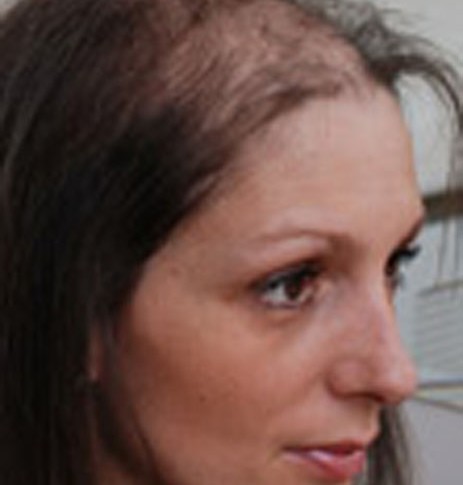There are many factors which might cause or contribute to hair-loss, and a substantial amount of these are often totally out of control of the effected individual. Around a quarter of men begin the process of balding by age thirty, and about two-thirds begin balding by age sixty; for a lot of people, losing some or all of their hair is almost a fact of life. There is almost a 60% chance of having the ‘baldness gene’, and the onset of hair-loss can be as early in life as the late teens.
Alopecia is the medical name given to baldness or hair loss. There are a variety of types of alopecia, with androgenic alopecia being the name given to pattern-baldness or genetic hair loss. Traction alopecia is a type of hair-loss often found in patches where there has been irritation to the scalp. One of the primary causes of traction alopecia is wearing the hair in a braid or ponytail which is too tight and pulls on the follicles. People who have their hair in dreadlocks or cornrows are at the greatest risk of traction alopecia, though anyone who frequently wears tightly fitting headgear are also at risk.
Another cause of alopecia is as a side-effect from a variety of medical procedures. The most high-profile of these being cancer hair loss caused by cancer treatments, chemotherapy and radiotherapy, which can cause not only hair loss on the head, but across the rest of the body also. However, alopecia is a possible side-effect of a variety of other drugs including steroids.
Alopecia can sometimes also be caused by an auto-immune response, where the body’s white blood cells are stimulated by an infection but attack and damage the hair follicles instead. Fungal infections can cause hair loss in the same way, by damaging the follicles. The rate of alopecia in people with other auto-immune conditions is higher than in people with healthy immune responses. These conditions include hyperthyroidism, diabetes and vitiligo.
Whatever the reason, hair-loss can be a distressing time in a person’s life. It can effect self-confidence and have a large impact on a person’s body image. In men, especially those who are in their thirties, the onset of balding can be perceived to signal the loss of youth and the definitive beginning of the ageing process.
Here at New Image Clinics, we understand hair-loss. We have been working in the field of non-surgical hair restoration for men and hair systems for men for more than two decades, and have seen technology create some huge advancements in hair loss treatments. Despite the prevailing sense of the 90’s, societal views towards hair replacements have changed, and it’s well known that several high-profile celebrities have taken the hair transplantation route.
While society has become more accepting of hair loss and the treatment for it, one thing that is now seen as more reprehensible is making a decision without being fully informed of all the aspects and factors involved. At New Image Clinics, our hair replacement experts will individually assess the needs of each and every client before suggesting a course of action.
Our cutting edge hair replacement systems are suitable for nearly everyone, and are so advanced that they are totally indistinguishable from natural hair. Hair replacement systems have such a huge number of benefits, especially when compared to the surgical hair transplant equivalent.
To find out more about non-surgical hair replacement and our high-tech hair replacement systems today and how they can help you regain your confidence and self-esteem, for testimonials and more information, contact us at New Image Clinics today.




